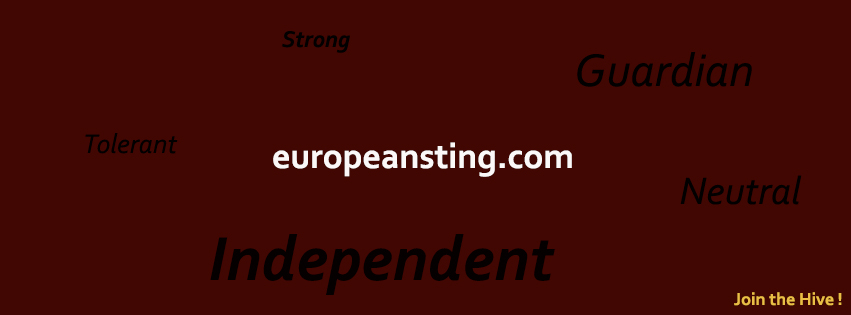
Inutsaaip Aqqulaa 366, Scoresbysund, Greenland (Andy Brunner, Unsplash)
This article is brought to you thanks to the collaboration of The European Sting with the World Economic Forum.
Author: Dietmar Siersdorfer, Chief Executive Officer, United Arab Emirates and Middle East, Siemens
While climate change is right on our doorstep and threatening to wreak havoc, the radical global action that could make a difference is still absent. Population growth and carbon emissions remain unabated. Cities are expanding at an alarming rate, adding 50 million people per year. By 2050, almost 70% of the world’s population is expected to live in cities, up from 55% at present.
It seems like an insurmountable challenge. But with available technology, we can make decisions today that will positively impact our future and that of generations to come. Knowing what we know about cities today – their impact on the environment, the huge amount of energy consumed by buildings and city infrastructure, and their carbon footprint – I believe we need to start there. And I am going to focus on energy.
Buildings consume more energy than industry or mobility. We eat, sleep, work, shop and spend most of our leisure time in buildings. Whether they’re skyscrapers or single-unit homes, buildings collectively have an undeniable impact on the environment around us. Consider this: buildings consume more than 40% of all energy generated globally. But by using smart, energy-efficient building technologies, we can reduce buildings’ energy consumption by 30-40%.
Energy you don’t use is energy you don’t have to generate. If less energy is required in buildings, power plants don’t need to produce as much. This will also bring down emissions from power plants, as well as the amount of natural resources burned for electricity generation.
So how do we go about realising this? Legislation is key. We cannot afford to wait for individuals to do the right thing. Pockets of change are insufficient to address such an enormous challenge. Countries and cities can act boldly and implement legislation that encourages the conversion of existing buildings into energy-saving structures, while making sure that upcoming ones are built with smart technologies in the first place.
There is also a monetary business case for this. We have proved that building technology can pay for itself within two years and helps owners achieve savings after that. They also create better environments for the people living or working in them. Happier and more productive people build stronger economies, after all.
Most of the buildings in the biggest cities globally are the same ones we will inhabit 25 years from now. There’s a strong case for retrofitting them with technology that can achieve energy savings, such as sensors and building-management systems. We have implemented this with many of our customers globally and have seen impressive results in the world’s top sustainable buildings. It is possible and within reach – as long as we can create awareness and understanding that smart buildings must become a central pillar of national energy strategies.
But it’s not only about buildings. We can apply the same concept to power plants. While the share of renewables is increasing globally, fossil fuels are still expected to make up a large percentage of the energy mix while we transition to cleaner energy. Therefore, making fossil-fuel power plants more efficient is also key. By modernising power plants and replacing old turbines with new, highly energy-efficient models, we can make a big difference to fossil fuel consumption and the production of emissions.
We now have gas turbine technology that can generate electricity at efficiency levels of more than 63%. Yet many countries around the world still have ageing power plants operating at efficiencies of 40% or lower. Energy efficiency refers to using less fuel to achieve more power. At a gas power plant with 63% efficiency, 63% of the gas used in power production creates electricity, while the rest is converted to heat. This paints a clear picture of the savings we can achieve on various fronts. As with buildings, there is a clear business case for energy efficiency. We can get more from the finite resources we have such as oil and gas, while reducing emissions and fuel costs endured by governments. Egypt is a great example, where the government now saves $1.3 billion in fuel costs annually thanks to energy-efficient power plants.
As with buildings, reductions in emissions from power plants is also attainable today. To achieve significant results, we need to implement this on a large scale by bringing in legislation to do away with low-efficiency, highly polluting power plants.
Making this world inhabitable and sustainable for the 9.8 billion people we expect to populate it by 2050 is a big feat, but one we can accomplish together. By bringing together know-how from the private sector and public legislation to implement new technologies, the journey to combating climate change has already started. Will you join us?



















“Buildings consume more energy than industry or mobility.”
I don’t think so.
https://www.cleanenergywire.org/sites/default/files/styles/gallery_image/public/uba_germanghgemissions1990_2017_clew.png
People fill more fuel into the tanks of their cars than in the oil tanks of their homes every year. Some families even have several cars. It’s insanity that we drive vehicles with the power able to heat 10 family homes, mostly just to get one single butt from A to B, and with a fuel efficiency below 15%.
Further on the article above reads like an advertisement for natural gas.
=> Research shows that natural gas no better than coal for mitigating climate change
And as the US has become a natural gas exporter:
=> Global spike in methane emissions over last decade likely due to US shale
=> US oil and gas methane emissions equivalent to 14 coal-fired power plants
=> Oil and gas is sector top source of US methane emissions, ahead of agriculture
A gas well remains a gas well, even when production is long ceased, the well is just being plugged. 5% of gas wells leak from day one on. After 14 years, 50% of the wells are leaking. So it’s only a matter of time when methane will be released into the atmosphere. Fossil methane is 87 times as potent as CO2.
=> Why gas wells leak
The same applies to the methane called “by-product” at oil fields.
=> Methane emissions from oil production up to twice as high as estimated
=> Methane from gas and oil wells found to travel farther than expected underground
There are currently more than 900,000 active oil and gas wells in the US. Trend is sharply rising.
Very strong atmospheric methane growth in the four years 2014‐2017: Implications for the Paris Agreement
Plain Language Summary
The rise in atmospheric methane (CH4), which began in 2007, accelerated in the past four years. The growth has been worldwide, especially in the tropics and northern mid‐latitudes. With the rise has come a shift in the carbon isotope ratio of the methane. The causes of the rise are not fully understood, and may include increased emissions and perhaps a decline in the destruction of methane in the air. Methane’s increase since 2007 was not expected in future greenhouse gas scenarios compliant with the targets of the Paris Agreement, and if the increase continues at the same rates it may become very difficult to meet the Paris goals. There is now urgent need to reduce methane emissions, especially from the fossil fuel industry.
Natural gas is not a “bridge fuel”, it accelerates global warming!
Errata:
Two links above don’t seem to work.
So for the first one also see here => https://www.umweltbundesamt.de/sites/default/files/medien/384/bilder/01-climate_klim-01_greenhouse-gas-emissions_figure.png
And => Methane from gas and oil wells found to travel farther than expected underground
Sorry for that.
I wrote a detailed comment on Sunday, but it is still “awaiting moderation”. So either there is no moderation here, or European Sting is censoring science and facts.
So far to European Sting’s “open invitation to the citizens of the world to find out what is really happening in European Affairs”.
The Sting’s Mission: “What is more, the Sting welcomes its readers to take part in this constructive and critical dialogue for a better Europe.”
I see. A little bit complaining has done the trick.